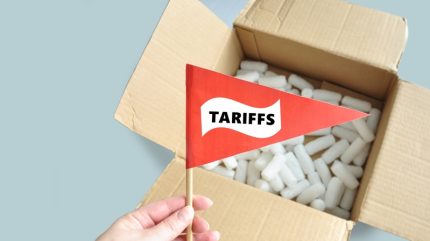
Online marketplaces and big-box chains that built their reputations on rock-bottom prices are quietly reshaping their offers after a fresh round of tariffs announced by the White House.
Retailers from fast-fashion platforms to household goods sellers have told investors or customers they will adjust prices — a move industry analysts warn will feed directly into higher costs for millions of shoppers.

Discover B2B Marketing That Performs
Combine business intelligence and editorial excellence to reach engaged professionals across 36 leading media platforms.
Why prices are rising now — and who’s affected
The latest wave of tariffs, including steep levies on selected imports, has forced importers to re-price entire categories.
Some China-based e-commerce platforms such as Shein and Temu said they would pass added charges to customers and removed certain low-margin items from sale as the new rules took effect.
At the same time, established global brands and retailers — from sportswear sellers to electronics and home-improvement chains — have warned investors that tariffs are compressing margins and will likely be reflected in shelf and online prices.
The White House has defended the measures as necessary to protect domestic industry, but the tariffs are paid at the border by U.S. importers and generally work their way downstream to consumers unless retailers choose to absorb the cost.

US Tariffs are shifting - will you react or anticipate?
Don’t let policy changes catch you off guard. Stay proactive with real-time data and expert analysis.
By GlobalDataSome retailers have said they will do a mix of both — absorbing some costs while increasing sticker prices on affected goods.
Retailer responses: eat the tariff, absorb it, or pass it on?
Not every company is following the same playbook.
Grocery chains such as Kroger have publicly said they will try to shoulder tariff hits to protect shoppers’ weekly bills, while other large merchants have warned that sustaining that approach is increasingly difficult.
Walmart and other mass-market sellers have been caught in a public tug-of-war: the White House has urged them to “eat” tariffs rather than raise prices, but retailers point to thin margins and operational realities when explaining price moves to investors.
Luxury and mid-market brands are reacting differently too. For example, Swatch — which faces a newly announced surcharge on Swiss imports — has indicated it will raise US retail prices on certain models to mitigate the hit, showing that tariff effects are not confined to budget goods.
That patchwork response means consumer pain points will vary by product category, brand and where shoppers buy.
What shoppers should expect this season
Shoppers are likely to see the clearest changes in product lines that rely heavily on low-cost imports: fast fashion, small electronics, accessories and certain homeware items.
Some online marketplaces have already implemented “import charges” or re-priced catalogues, and economists expect a measurable uptick in retail inflation if tariffs remain in place.
That effect will be compounded if retailers pass on full costs rather than absorbing a portion — a decision most companies will make based on competitive pressures and inventory cycles.
For consumers, the immediate steps are practical: compare prices across platforms, check return policies before buying higher-ticket items, and weigh whether a short-term saving is worth potential longer shipping times or customs issues.
For policymakers and businesses, the challenge remains balancing protectionist aims with the real-world impact on household budgets — something millions of shoppers will feel at the till.
Navigate the shifting tariff landscape with real-time data and market-leading analysis. Request a free demo for GlobalData’s Strategic Intelligence here.





